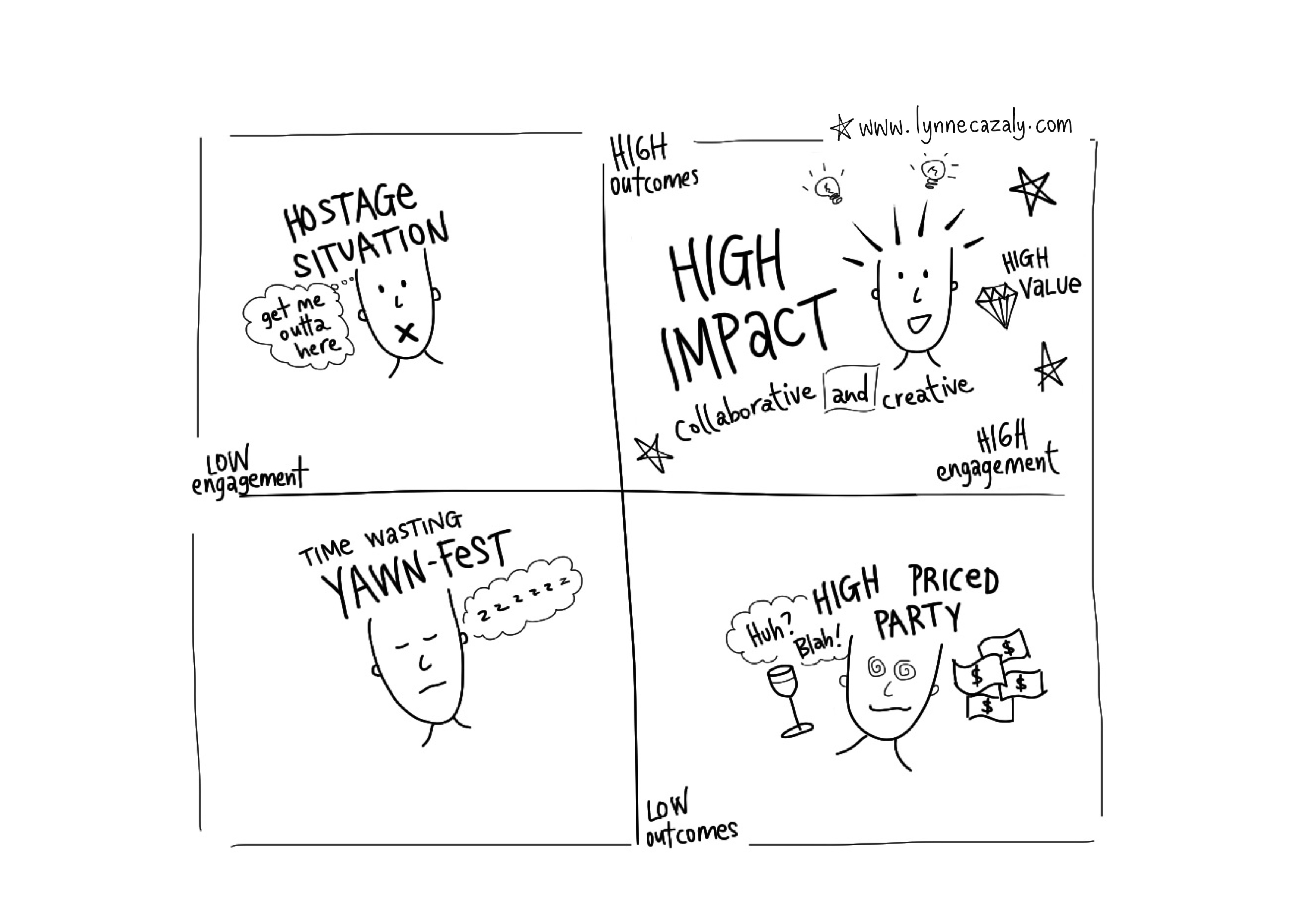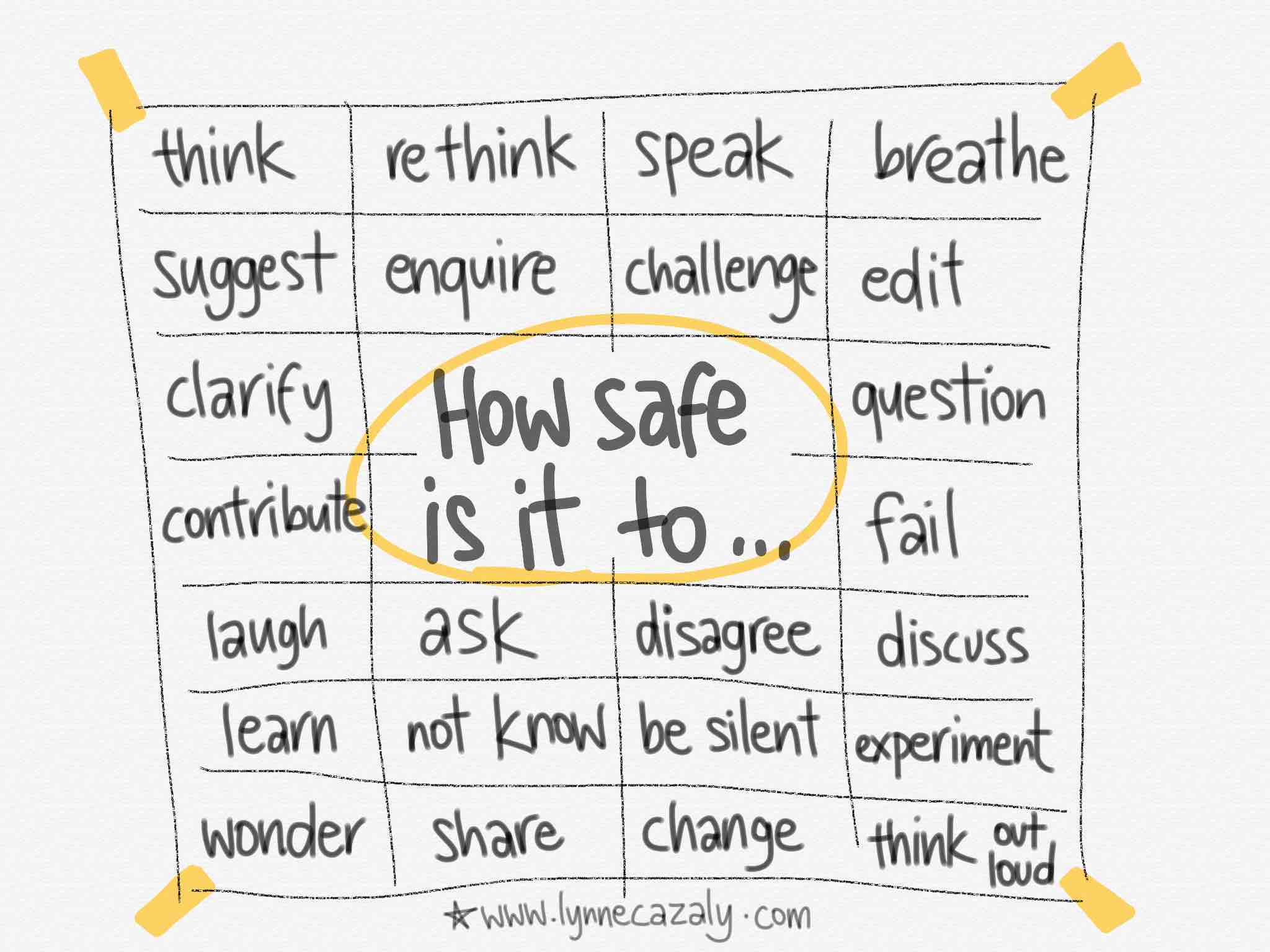 The meeting culture in many companies sucks. It’s no surprise given how last century some of our meeting behaviours are. We have meetings that are too many, too long, too little achieved, too much talk, too frustrating… it’s all too much!
The meeting culture in many companies sucks. It’s no surprise given how last century some of our meeting behaviours are. We have meetings that are too many, too long, too little achieved, too much talk, too frustrating… it’s all too much!
The culture of how we meet can be deeply ingrained in an organisation. There are plenty of unwritten and unspoken rules that get followed simply because that’s how it’s been done for years.
And because we expect (or hope?) that so much will get done in our meetings, we owe it to our schedules, customers, colleagues (and families) to get as productive as we can.
Here’s how to inject some fresh thinking and behaviour into your workplace meetings for this week, month, year:
1. Have less: Say ‘no’
This is a classic piece of advice. Start fresh this year. Don’t meet if you don’t need to and if you do need to...
2. Have shorter: Time box it
Ok yes, you’re going to meet but keep the duration shorter. Use the technique of time-boxing; set a timer on your phone and go for the surprise of a seven, 16 or 23-minute meeting. I like to use a humorous ringtone for the alarm like zombie noises, spaceships or the theme from a well-known sit-com. It always gets a laugh, breaks the tension and inspires people to refocus for the next topic.
3. Go visual: Show me
Help people cut through all the blah-blah. When people can see what you mean, they’ll understand quicker and you’ll make faster progress. Everyday I work with leaders and teams and use sensemaking or mapping techniques with them. You don’t need to be able to draw. Pick up a marker and capture the key points, those ‘in-a-nutshell’ comments on a flip chart, whiteboard, tablet or note pad. What shape is their idea? Map that. The meeting will be 25% shorter once people can see what they’re talking about.
4. Follow a process: This then that
Too many meetings follow an agenda - if you’re lucky - but no process. A process outlines how you’re going to handle each agenda item.
The default tends to be ‘let’s all talk about it’. Here the whole group of the meeting talk (or interrupt each other) to put their views forward. But it’s so challenging to move from the talking about your opinion, to the brainstorming solutions part and then try and get to making a decision – all in the one breath.
Borrowed from the world of professional facilitators, a process will help you confirm the facts or background, then hear opinions, then generate ideas and finally, agree to actions. Here’s my advice on an Accelerated Meeting Framework that just works and how to do it.
5. Stay creative: Yes and…
Aim to include more creative techniques in your meetings, workshops and sessions. I’m not talking about ‘Pass the Orange’ or ‘Bust the Balloon’ party games by the way! I love to borrow from the world of improvisation. The Improv Encyclopedia is a rich trove of creative loot for groups and teams to be more innovative, ingenious and collaborative when they get together.
6. Get inspiration: good better best
It’s practical to aspire towards ‘better practice’ if you can’t quite get to best practice yet. Do this by learning from other fields and businesses that nail their meeting productivity and culture
There is a lot to learn about productive collaboration from the Scrum methodology used by many software and tech companies, and increasingly other industries and businesses. This is thanks Jeff Sutherland – one of the inventors of Scrum and his practical book ‘Scrum’.
7. Stand up sometimes: No chairs required
A popular scrum approach is to have a daily standup meeting. Simply start by removing the chairs and tables from your meeting; you’ll have shorter, more focused and productive meetings right away. You don’t even need a meeting room for this! Stand up in your workspace. I saw a Zara retail team having their morning standup huddle between the shorts and the shoes!
8. Change your environment: Love thy neighbour
Break your habits and patterns of same/same; the same rooms for the same meetings. In workplaces where it’s challenging to find a meeting room, why not go outside? Try walking meetings, go to a cafe or other unusual and inspiring venue like sports courts, community colleges, bowling alleys, community theatres, swimming pools, the beach or lake, local park or other recreation facility. Take a deep breath while you’re there!
A client recently hunted out some meeting room locations in the businesses that were next door or nearby. Now they have some inspiring collaborative ventures up and running that started just by finding out who was in the neighborhood and whether they might have some meeting space available.
9. Bonus tip: Stay open
If someone else in the team brings along some creative and cultural shifts to the way you meet, collaborate or communicate this year, take it… stay open. Say ‘yes’. Experiment, test and try.
Try hitting ‘refresh’ on your meetings, workplace, collaboration and communication habits. Test and experiment with things to find what works and keep at it. Avoid falling back into lazy meeting habits or you’ll have the same things, creating the same outcomes and getting the same results. That’s so last century!
 Thursday, August 22, 2019 at 7:41AM
Thursday, August 22, 2019 at 7:41AM  Adopting new more agile ways of working is on the agenda for businesses - large, small, corporate, not for profit, government - responding to the needs of customers and the changing ways of the world. If a business needs to change how it is working, the culture will need to shift too.
Adopting new more agile ways of working is on the agenda for businesses - large, small, corporate, not for profit, government - responding to the needs of customers and the changing ways of the world. If a business needs to change how it is working, the culture will need to shift too. 





















